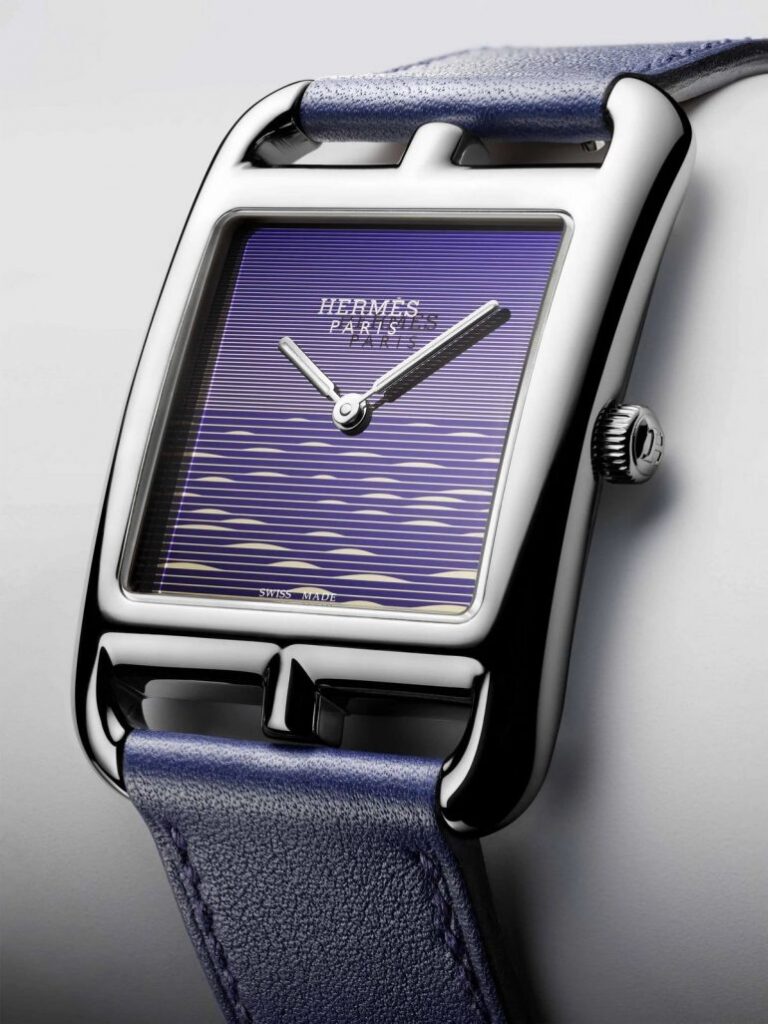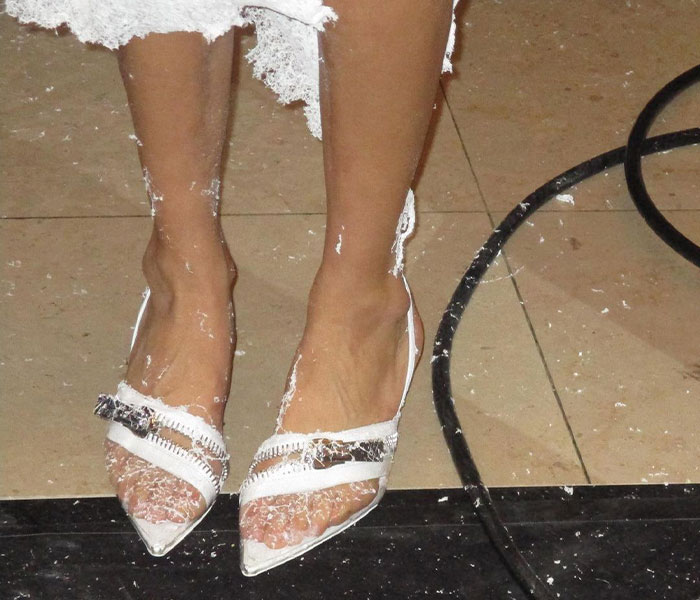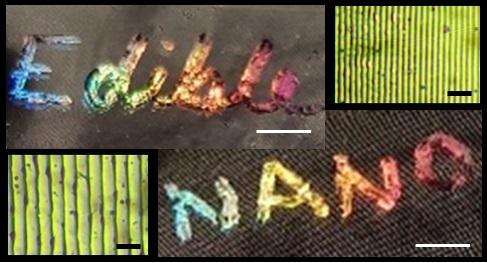Interweave is a free show at The Kent in the gallery in downtown Vancouver, Canada. Here’s more from a Simon Fraser University (SFU) announcement (received via email),
SFU School for the Contemporary Arts (SCA) alumnus, Kimia Koochakzadeh-Yazdi, is hosting Interweave, a multi-sensory show where fashion, movement, and music come together though wearable instruments.
Embrace the fusion of creativity and expression alongside your fellow alumni in a setting that celebrates innovation and the uncharted synergy between fashion, music, and movement. This is a great opportunity to mingle and reconnect with your peers.
Event Details:
Date: March 21, 2024 Time: Doors 7:30pm, Show 8:00pm Location: The Kent Vancouver, 534 Cambie Street Free Entry, RSVP required
Interweave is the first event from Fashion x Electronics (FXE), a collective created by Kimia Koochakzadeh-Yazdi, SCA alumnus, composer, and performer, and designer Kayla Yazdi. FXE is an interdisciplinary collective that is building multi-sensory experiences for their community, bridging together a diverse range of disciplines.
This is a 19+ event. ID will be checked at the door.
I wasn’t able to discern much more about the event or the Yazdi sisters from their Fashion x Electronics (FXE) website but there is this about Kayla Yazdi on her FXE profile,
Kayla Yazdi
Designer / Co-Producer
Kayla Yazdi is an Iranian-Canadian designer based in Vancouver, Canada. Her upbringing in Iran immersed her in a world of culture, art, and color. Holding a diploma in painting and a bachelor’s degree in design with a specialization in fashion and technology, Kayla has cultivated the skill set that merges her artistic sensibilities with innovative design concepts.
Kayla is dedicated to the creation of “almost” zero-waste garments. With design, technology, and experimentation, Kayla seeks to minimize environmental impacts while delivering unique styles.
Kimia Koochakzadeh-Yazdi’s FXE profile has this,
Kimia Koochakzadeh-Yazdi
Sound Artist / Co-Producer
Kimia Koochakzadeh-Yazdi(b. 1997 Tehran, Iran) is a California/Vancouver-based composer and performer. She writes for hybrid instrumental/electronic ensembles, creates electroacoustic and audiovisual works, and performs electronic music. Kimia explores the unfamiliar familiar while constantly being driven by the concepts of motion, interaction, and growth in both human life and in the sonic world. Being a cross-disciplinary artist, she has actively collaborated on projects evolving around dance, film, and theatre. Kimia’s work has been showcased by organizations such as Iranian Female Composer Association, Music on Main, Western Front, Vancouver New Music, and Media Arts Committee. She has been featured in The New York Times, Georgia Straight, MusicWorks Magazine, Vancouver Sun, and Sequenza 21. Her work has been performed at festivals around the world including Ars Electronica Festival, Festival Ecos Urbanos, Tehran Contemporary Sounds, AudioVisual Frontiers Virtual Exhibition, The New York City Electroacoustic Music Festival, Yarn/Wire Institute, Ensemble Evolution, New Music on the Point, wasteLAnd Summer Academy, EQ: Evolution of the String Quartet, Modulus Festival, and SALT New Music Festival. She holds a BFA in Music Composition from Simon Fraser University’s Interdisciplinary School for the Contemporary Arts, having studied with Sabrina Schroeder and Mauricio Pauly. Kimia is currently pursuing her DMA in Music Composition at Stanford University.
For more details about the sisters and the performance, Marilyn R. Wilson has written up a February 21, 2024 interview with both sisters for her Olio blog,
Can you share a little bit about your background, the life, work, experiences that led you to who you are today?
Kayla: I’m a visual artist with a focus on fashion design, and textile development. I like to explore ways to create wearable art with minimal waste produced in the process. I studied painting at Azadehgan School of Art in Iran and fashion design & technology at Wilson School of Design in Vancouver. My interest in fashion is rooted in creating functional art. I enjoy the business aspect of fashion however, I want to push boundaries of how fashion can be seen as art rather than solely as production.Kimia: I’m a composer of acoustic and electronic music, I perform and build instruments, and a lot of times I combine these components together. Working with various disciplines is also an important part of my practice. I studied piano performance at Tehran Music School before moving to Vancouver to study composition at Simon Fraser University. I am currently a doctorate candidate in music composition at Stanford University. I love electronic music, food, and sports! My family, partner, and friends are a huge part of my life!
…
You have your premier event called “Interweave” coming up on March 21st at The Kent Gallery in Vancouver. What can guests attending expect this evening?
Kayla & Kimia: Interweave is a multidisciplinary performance that bridges fashion, music, technology, and dance. Our dancers will be performing in garments designed by Kayla, that are embedded with microcontrollers and sensors developed by Kimia. The dancers control various musical parameters through their movements and their interaction with the sensors that are incorporated within the garments. Along with works for movement and dance, there will be a live electronic music performance made for costume-made instruments. So far we have received an amazing amount of support and RSVP’s from the art industry in Vancouver and look forward to welcoming many local creative individuals.
We’d love to know about the team of professionals who are working hard to create this unique experience.
Kayla & Kimia: We are working with the amazing choreographers/dancers Anya Saugstad and Daria Mikhailiuk. We are thankful for Laleh Zandi’s help for creating a sculpture for one of our instruments which will be performed by Kimia. Celeste Betancur and Richard Lee have been our amazing audio tech assistants. We are very appreciative of everyone involved in FXE’s premiere and can’t wait to showcase our hard work.
…
I have a bit more about Kimia Koochakzadeh-Yazdi and her work in music from a February 27, 2024 profile on the SFU School for the Contemporary Arts website, Note: Links have been removed,
Please introduce yourself.
I’m a composer of acoustic and electronic music, I perform and build instruments, and a lot of times, I combine these components together. Working with various disciplines is also an important part of my practice. I studied piano performance at Tehran Music School before moving to Vancouver to study composition at Simon Fraser University, graduating from the SCA in 2020. I am currently a doctoral student in music composition at Stanford University, where I spend most of my time.
…
Tell us about your current studies.
I’m in the third year of the DMA (Doctor of Musical Arts) program at Stanford University. I do the majority of my work at the Center for Computer Research in Music and Acoustics (CCRMA). I’m currently trying to learn and to experiment as much as possible! The amount of resources and ideas that I have been exposed to during the last couple of years has been quite significant and wonderful. I have been taking courses in subjects that I never thought I would study, from classes in the computer science and the mechanical engineering departments, to ones in education and theatre. I’m grateful to have been given a supportive platform to truly experiment and to learn.
As for my compositions, they are more melodic than before, and that currently makes me happy. I have started to perform more again (piano and electronics), and it makes me question: why did I ever stop…?
…
Koochakzadeh-Yazdi’s mention of building instruments reminded me of Icelandic musician, Bjork and Biophilia, which was an album, various art projects, and a film (Biophilia Live), which featured a number of musical instruments she created.
Getting back to Interweave, it’ s on March 21, 2024 at The Kent, specifically the gallery, which has,
… 14 foot ceilings boasts 50 track lights with the ability to transform the vacuous hall from candlelight to daylight. The lights are fully dimmable in an array of playful hues, according to your whim. A full array of DMX Lighting and control systems live alongside the track light system and our recently installed (Vancouvers only) immersive projection system [emphasis mine] is ready for your vision. This is your show.
I wonder if ‘multi-sensory’ includes an immersive experience.
Don’t forget, you have to RSVP for Interweave, which is free.




